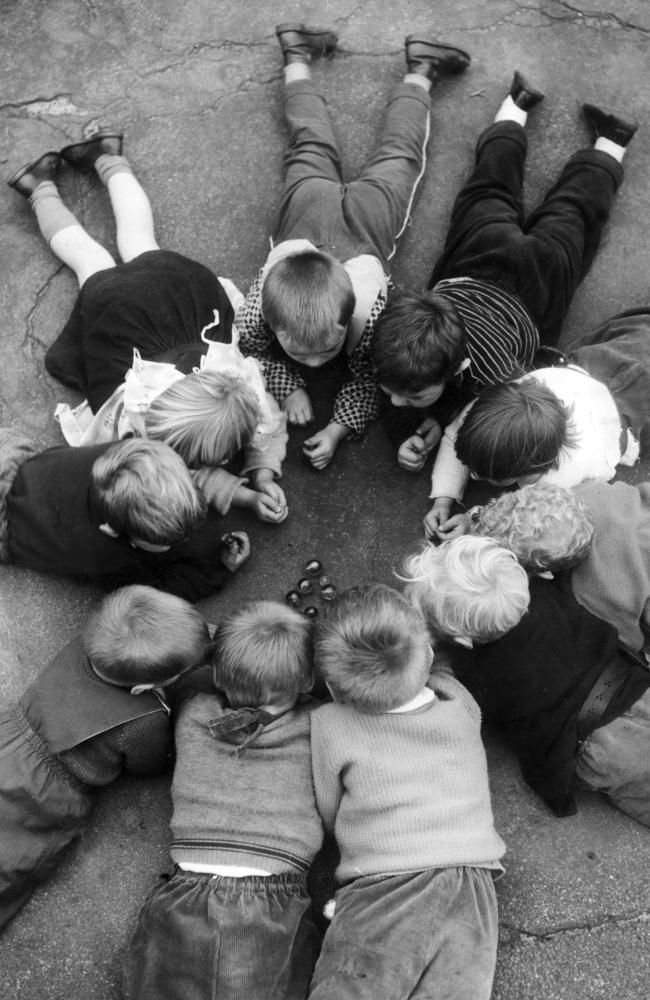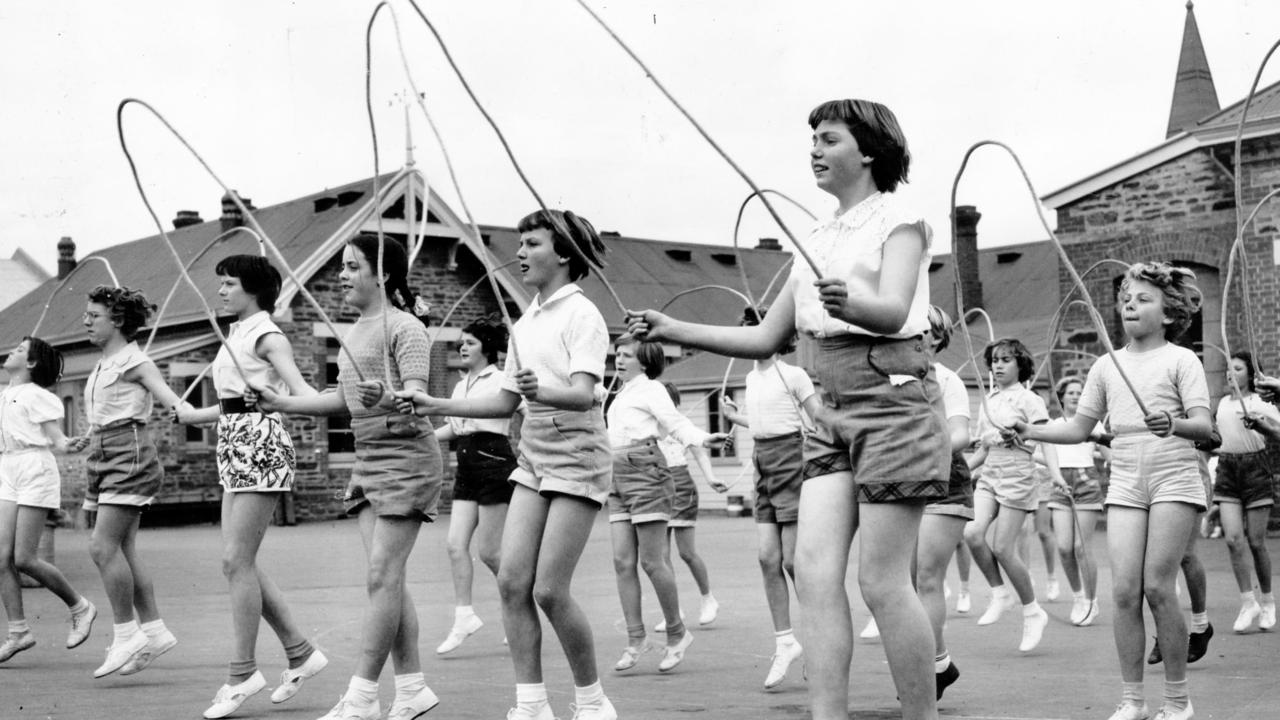What it was like to be a kid in the 1950s and 60s
NO mobile phones or digital world. For many, no TV. Rubbish reused as inventively as possible. Growing up in the 1950s and 60s was so different to today, kids wouldn’t recognise it. Here’s what it was like.
- Growing up in the freedom of the 1950s
- What school was like in Adelaide in the 1950s
- How refrigerators have changed
- How kids won the wild west in the 1950s
GROWING up in a Baby Boomer’s Australia was a very different event to what our children and grandchildren are experiencing today.
The world for children has dramatically changed in just three generations.
Before the rise of the internet, mobile phones, tablets, laptops and other digital devices, children spent most of their time outdoors, and every day was a new adventure.
Imagination was the key ingredient as we made up new games with almost anything available. Old pram wheels, a piece of rope, a length of wood, a piece of chalk, tin cans, bottles — just about anything and everything could be used for a game.
There was a definite division between boys’ games and girls’ games, and although there were no rules saying that boys couldn’t play with a skipping rope, it was more likely to be turned into a lasso than used for skipping.
There was the odd tomboy who would climb trees and scale fences with the boys but girls much preferred to stick to their own adventures.

With no health and safety laws, when building a go-kart, all that was needed was a steep hill, four old pram wheels, a plank of wood, an apple crate, a length of rope and a bolt to fix the steering device.
No brakes, no crash helmet, elbow or knee pads required, and definitely, no fear. Boys played Cowboys and Indians, dressed up as Hopalong Cassidy or Smoky Dawson. Football and cricket were played out on the road, interrupted by the occasional car. The streets were full of kids with scraped knees and elbows, playing chasey and hide and seek, all having the time of their lives.
Girls played skippy and hopscotch, dressed up in their mother’s high heels and wheeled their dolls around in small prams.
They played with hula hoops, performed concerts on front verandas and chanted poems to such games as Ring a Ring a Rosie and Oranges and Lemons.
In the Boomer years, children were expected to be adventurous, take risks and to learn by their mistakes.
The conventional wisdom at the time was that it was healthy, helped with their overall development and was a natural part of growing up. There was no mollycoddling and kids were encouraged to get dirty, climb trees, play out on the road, play in the dirt, be physical and were told “just make sure you’re home when the street lights come on, in time for tea”.
Mothers
kept a small medicine chest at home equipped with Band-Aids and a bottle of iodine to disinfect the cuts and grazes.

A nasty bump on the head might get a bit more attention but it was generally a quick bandage and a kiss to make it better, and back out again to play.

Boomer children were never analysed or scrutinised for their happiness or wellbeing.
There were very few who were obese and ADHD was unheard of.
There were no such things as health and safety or children’s rights, and
corporal punishment was freely administered at home and at school.
If you were punished at school, you wouldn’t dare go home and tell your parents because you would most likely cop another belting from them.
Adults had to be treated with the utmost respect. At school, teachers were addressed as “Sir” or “Miss”, all adults as “Mr” and “Mrs” and adult friends of the family became “Uncle” and “Aunty”.


All figures of authority and the institutions that they worked for were held in the highest esteem, including the police, local priest or minister, doctors and bank managers.
Nearly all children’s clothing was homemade or hand-me-downs from an older sibling.
There were no designer labels or specialty shops and most mothers sewed or knitted so the kids were kept warm, with jumpers and coats
made lovingly from the constant click-clack of knitting needles around the wireless
at night.
Second-hand bikes and toys were recycled, repainted and repaired and passed on from one child to the next.
If the bike was too big, you just made do until you “grew into it”.


There were no restrictions as to where you could ride your bike — the local park, next suburb, the beach or right across town — just so long as you were home in time for tea.
To the children of today, a Baby Boomer childhood might seem grim and archaic. Strict parents and grandparents, stricter teachers, discipline, corporal punishment, respect, being seen and not heard and being reared with tough love.
However, many children of the ’50s, ’60s and ’70s remember their younger years fondly. There was certainly more freedom and, without the influence of modern media, much less pressure to conform and fit in.
A Boomer childhood was possibly the last in which children were able to maintain their innocence right through to their early teen years.
There was no peer pressure to grow up quicker than nature intended and more time to enjoy an innocent, carefree life full of childish fun and games.
Bob Byrne is the author of Adelaide Remember When and posts memories of Adelaide every day on Facebook.com/AdelaideRememberWhen/



